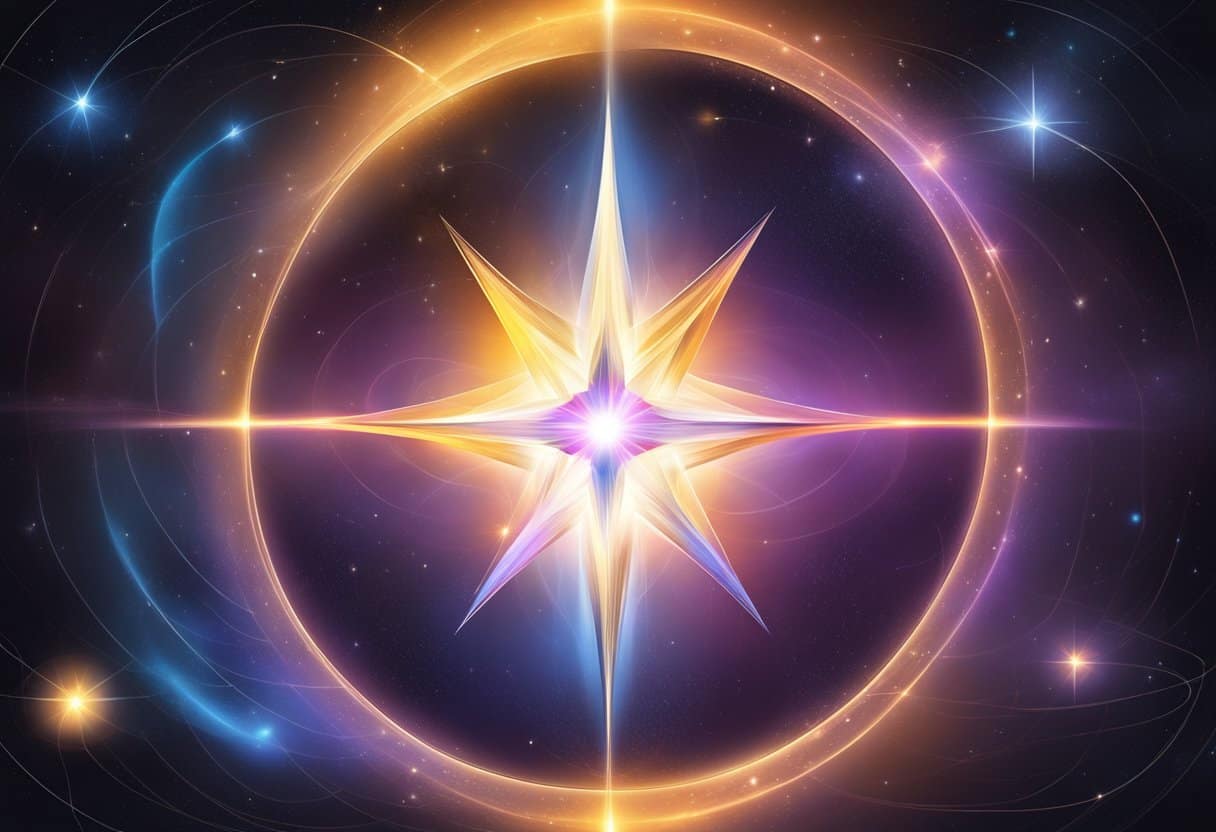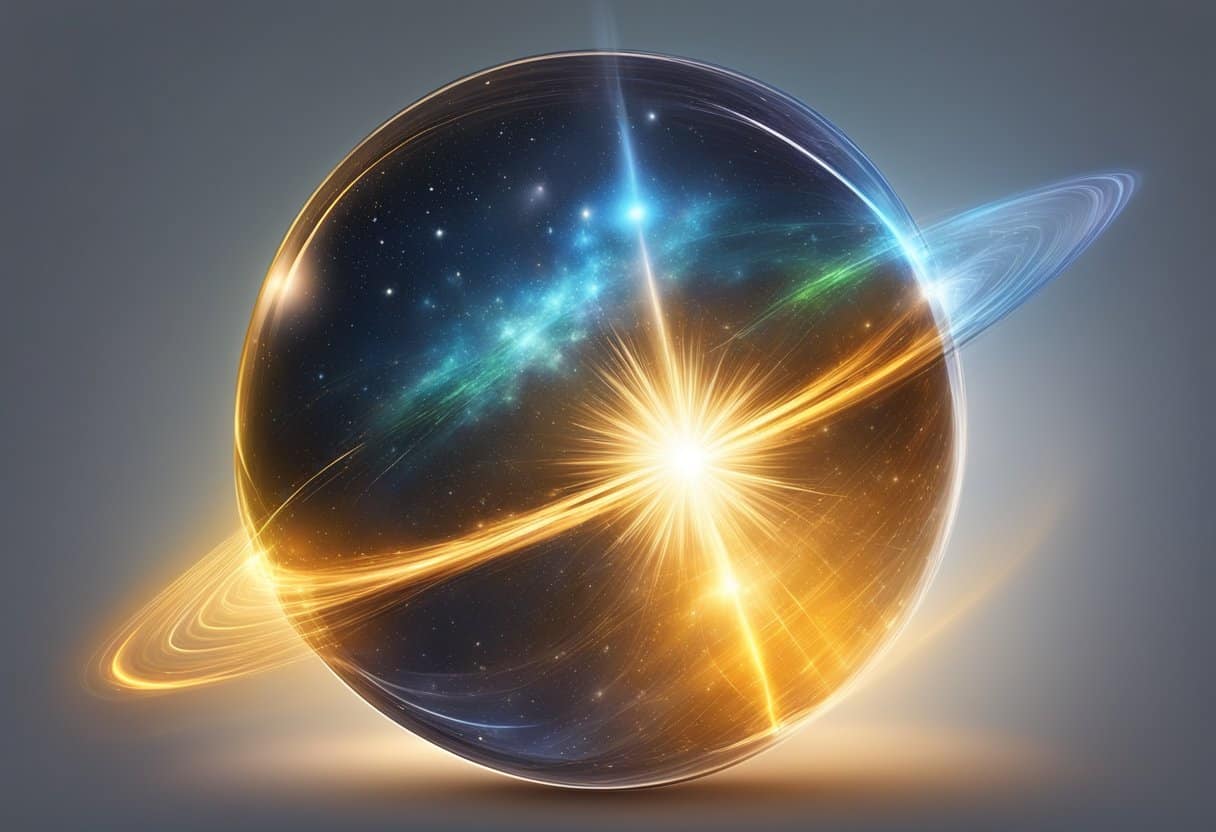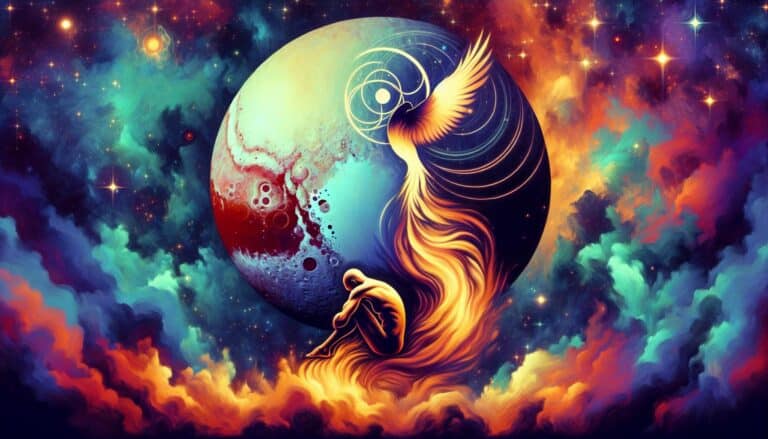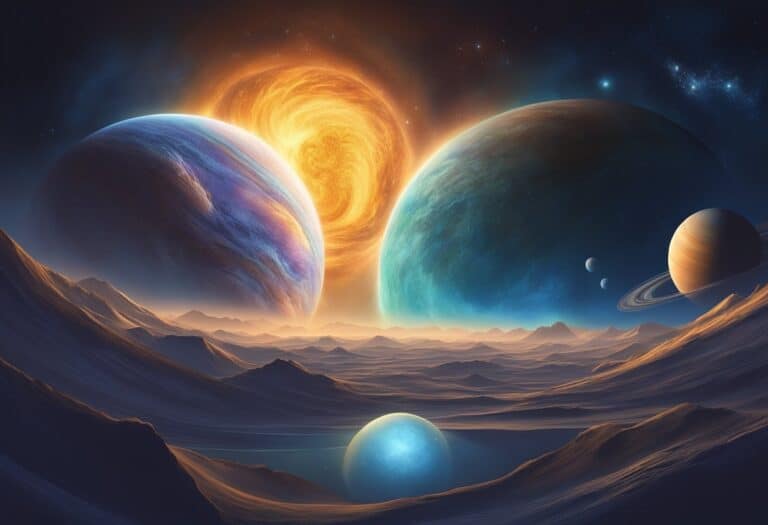Stellar equilibrium refers to the balance a star maintains between the inward pull of gravity and the outward pressure of nuclear fusion occurring in its core.
This state of balance is essential for the life of a star and determines many of its characteristics. The exact form of equilibrium depends on several factors, including a star’s mass, age, and composition. As stars evolve, they go through various phases, with distinct equilibrium states in each.
For a star like our Sun, equilibrium is maintained for billions of years as it fuses hydrogen into helium. However, as a star’s fuel supply changes or runs out, it undergoes significant changes, which affect its equilibrium. Massive stars, for example, experience a different equilibrium dynamic due to their greater forces and more complex nuclear fusion processes.
Besides theoretical understanding, astronomers study stellar equilibrium through observations across different wavelengths to understand the complexities of these cosmic giants.
Stellar equilibrium is the critical balance between gravity and nuclear fusion within a star, determining its life cycle and characteristics. It’s influenced by the star’s mass and evolves through different phases.
Fundamentals of Stellar Equilibrium

In studying stars, you’ll find that stellar equilibrium is a state where opposing forces within a star are balanced. This balance allows a star to maintain its structure over long periods.
Balance of Forces
Gravity, pulling inward, and pressure, pushing outward, are the two primary forces in a star. Your understanding of stellar equilibrium begins with the recognition that a star’s life is largely a tug-of-war between these forces. Gravity, emanating from the star’s mass, strives to collapse it. In contrast, thermal pressure, driven by nuclear fusion reactions in the star’s core, resists this collapse and pushes outward.
Hydrostatic Equilibrium
Your star has reached hydrostatic equilibrium when the gravitational force and the pressure gradient force are equal at every point inside the star. This state is expressed by the equation of hydrostatic equilibrium:
[ \frac{dP}{dr} = -\rho(g) \cdot g ]
where ( dP/dr ) is the pressure gradient, ( \rho(g) ) is the density as a function of radius, and ( g ) is the local gravitational acceleration. When a star achieves hydrostatic equilibrium, it becomes stable and can sustain nuclear fusion in its core, like the processes described in An introduction to stellar astrophysics.
Stellar Structure and Energy Transfer
In the balanced cosmos of a star, two main processes govern your understanding of stellar equilibrium: the nuclear fusion reactions at the core and the energy transport mechanisms through the stellar interior.
Core Nuclear Reactions
At the heart of a star like the Sun, immense pressure and temperature initiate nuclear fusion where hydrogen atoms fuse to form helium—a process that liberates vast quantities of energy. This energy is crucial as it counteracts gravitational pull attempting to compress the star further. For a concise description of how these reactions underpin a star’s structure.
Radiative and Convective Zones
Above the core lies the radiative zone, where energy moves outward by photons in a process known as radiative transfer. This zone is stratified; each layer is stable and doesn’t mix. In contrast, the convective zone, often found nearer the star’s surface, circulates energy through convection currents. Here, hot plasma rises, cools as it loses energy, then sinks, creating a cycle. The interaction of light with matter and the details of energy transport in these zones are further elaborated in The fundamentals of stellar astrophysics.
Life Cycle of Stars and Equilibrium
Understanding stellar equilibrium is fundamental to grasping how stars maintain a state of balance throughout their life cycle. This includes the forces at play and how they change as a star progresses through different stages.
Main Sequence Equilibrium
In the main sequence phase, a star is in a state where the gravitational force pulling inward is precisely balanced by the outward pressure from nuclear fusion at its core. The hydrostatic equilibrium is critical for the star’s stable existence during this time. For a deeper insight into these processes, the principles outlined in “The fundamentals of stellar astrophysics” provide a detailed understanding. During this phase, the star converts hydrogen into helium, releasing immense energy that contributes to its luminosity and surface temperature.
Post-Main Sequence Phases
As a star exhausts the hydrogen at its core, it transitions out of the main sequence phase. During the post-main sequence stages, stars undergo a series of complex changes. Eventually, they may swell into red giants or shrink into white dwarfs, following paths dependent on their original mass.
The delving into the life cycle of clusters in “The life cycle of star clusters in a tidal field” can provide more nuanced details on the evolution and equilibrium of stars in these later stages. The delicate balance shifts as nuclear reactions inside the star navigate through various elements, leading to different end states such as supernovae for more massive stars or planetary nebulae for intermediate-mass stars. Each phase brings its own form of equilibrium, governed by the interplay between gravity and the increasingly complex nuclear reactions within the star’s interior.
Stellar Mass and Equilibrium Dynamics
In the cosmos, the balance of forces in a star is a delicate interplay involving its mass. This equilibrium dictates a star’s life span, brightness, and eventual demise.
Mass-Luminosity Relationship
The Mass-Luminosity Relationship highlights a direct correlation: the more massive a star, the more luminous it is. Specifically, if you double a star’s mass, the brightness increases by approximately the factor of eight. This relationship is crucial for understanding how a star’s mass impacts its energy output and stability over time.
Chandrasekhar Limit
The Chandrasekhar Limit is a stern threshold, approximately 1.4 solar masses, delimiting the maximum mass of a white dwarf star. Going beyond this limit means you’re looking at the star’s unavoidable collapse into a neutron star or black hole under the crush of gravity, unable to be balanced by electron degeneracy pressure.
Observational Aspects of Stellar Equilibrium
Your understanding of the cosmos can greatly expand by observing how stars maintain their balance. Stellar equilibrium is a complex dance between opposing forces, and its study has been illuminated through the lens of direct observation and sophisticated analysis.
Spectroscopic Analysis
Through spectroscopic analysis, you can glean vital information about stars’ atmospheric properties. By dissecting the light from stars into spectrums, astronomers determine chemical compositions, densities, and temperatures — all key indicators of equilibrium. This method unveils not only a star’s current state but also offers clues to its past and future evolutionary stages.
Luminosity and Temperature Classification
Stellar temperatures and brightness levels provide another framework for understanding equilibrium. Stars are classified according to the Hertzsprung-Russell diagram, which organizes them based on their luminosity and surface temperature. This classification scheme, founded on observational data, allows you to infer the balance between the gravitational forces and internal pressures of a star without needing to resort to more invasive or theoretical methods.
Frequently Asked Questions
In this section, you’ll find targeted answers to key questions about stellar equilibrium, a critical concept for understanding the life cycle and stability of stars.
What two forces are balanced in a star during stellar equilibrium?
In stellar equilibrium, gravity pulling inward is perfectly balanced by the outward pressure of nuclear fusion. This balance ensures the star’s structure remains stable and does not collapse or expand uncontrollably.
How does the concept of hydrostatic equilibrium relate to a star’s stability?
Hydrostatic equilibrium is the specific balance between gravitational force and the internal pressure in a star. A star maintains stability when these forces are in a state of hydrostatic equilibrium, preventing it from collapsing or excessively expanding.
What role does nuclear fusion play in maintaining stellar equilibrium?
Nuclear fusion generates the energy and outward pressure needed to counteract the inward pull of gravity. By producing energy through the fusion of atomic nuclei in the core, stars can sustain their equilibrium over long periods.
During which stage of a star’s life cycle is stellar equilibrium most critical?
Stellar equilibrium is most critical during the main sequence phase of a star’s life cycle, which is the longest-lasting stage where a star steadily fuses hydrogen into helium in its core.
How do changes in core temperature affect a star’s equilibrium?
A higher core temperature increases the rate of nuclear fusion, thus amplifying the outward pressure. Conversely, a decrease in core temperature leads to reduced fusion activity, weakening the outward force and affecting the star’s equilibrium.
Can you explain the relationship between stellar equilibrium and a star’s lifespan?
The duration of a star’s equilibrium largely determines its lifespan. A state of prolonged equilibrium, typically experienced by stars of moderate mass, leads to longer lifespans, while massive stars consume their fuel more rapidly, disrupting equilibrium and shortening their life cycle.







